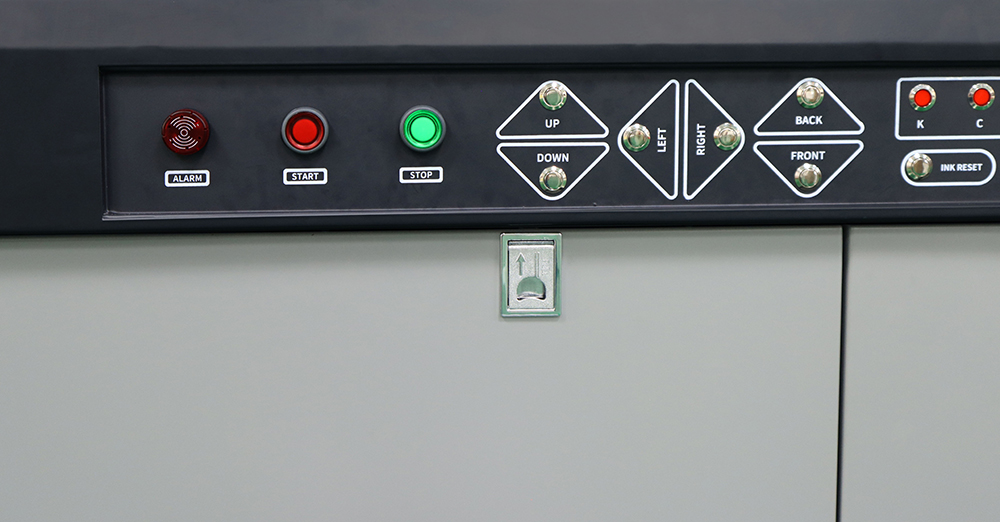UV Flatbed Printer Maintenance: Tips and Tricks
UV Flatbed Printer Maintenance: Tips and Tricks
In the world of digital printing, UV flatbed printers have emerged as a game-changer, offering unparalleled versatility, precision, and speed. However, maintaining these high-performance machines is crucial to ensure optimal output quality and prolong their service life. This article delves into the essential tips and tricks for UV flatbed printer maintenance, covering environmental considerations, printhead maintenance, and overall machine care.

Introduction
UV flatbed printers have transformed the printing industry by enabling the direct printing of various materials, including glass, ceramics, wood, metals, and plastics. Their ability to print high-resolution graphics and text with vibrant colors and instant curing makes them indispensable for applications ranging from advertising, packaging, and signage to industrial prototyping and fine art reproduction. However, to harness their full potential, proper maintenance practices are paramount.
Environmental Considerations
Ground Level and Stability
The first step in maintaining a UV flatbed printer involves ensuring it operates in a suitable environment. The weight of these machines is substantial, necessitating a flat and stable foundation. Uneven or unstable ground can lead to mechanical misalignment and premature wear of components. Therefore, it is crucial to position the printer on a level, reinforced floor to minimize vibrations during operation.
Cleanliness and Dust Control
Regular cleaning of the printer’s exterior and interior is vital to prevent dust accumulation, which can clog ink nozzles and affect print quality. Staff should be trained to clean the machine surface, ink paths, and printhead regularly, using soft, lint-free cloths. Furthermore, after daily use, it is essential to cover the printer with a dust cloth and close all access panels to prevent dust and moisture from entering the system overnight.
Ventilation and Temperature Control
Proper ventilation is crucial to maintain the printer’s internal temperature within the recommended range. Excessive heat can damage electronic components and affect ink viscosity, leading to print inconsistencies. Ensure the printer is located in a well-ventilated area and, if necessary, use fans or air conditioners to maintain a consistent ambient temperature.
Printhead Maintenance
Daily Cleaning Routine
The printhead is the heart of any UV flatbed printer, and its proper maintenance is essential for consistent, high-quality output. A daily cleaning routine should be established to remove any residual ink or contaminants that may accumulate during printing. This can be achieved by using a dedicated cleaning solution and a soft, lint-free cloth or swab.
Deep Cleaning
In addition to daily cleaning, periodic deep cleaning of the printhead is necessary to remove more stubborn ink deposits and prevent nozzle clogging. This involves soaking the printhead in a specialized cleaning solution for a prescribed period, followed by rinsing with distilled water and drying thoroughly. Always refer to the manufacturer’s instructions for specific cleaning procedures to avoid damaging the delicate printhead components.
Handling Nozzle Clogs
Nozzle clogs are a common issue that can significantly impact print quality. If a nozzle becomes clogged, immediate action is required. First, pause the print job and attempt to flush the clogged nozzle with the printer’s built-in cleaning cycles. If this fails, manually clean the nozzle using a syringe filled with cleaning solution. Be gentle during this process to avoid damaging the delicate nozzle structure.
Storage and Transportation
When the printer is not in use for an extended period, proper storage of the printhead is essential to prevent damage. Clean the printhead thoroughly, then wrap it in plastic wrap or a specialized storage container filled with a humidity-controlled solution. Store the printhead in a cool, dark place to minimize the risk of contamination or degradation.
Overall Machine Maintenance
Regular Inspections
Regular inspections of the printer’s mechanical components, such as guide rails, belts, and bearings, are necessary to identify potential issues early on. Lubricate moving parts as per the manufacturer’s recommendations to ensure smooth operation and reduce wear.
Ink Management
Proper ink management is crucial to maintain print quality and extend the life of the printer’s components. Use only high-quality, manufacturer-approved inks to minimize the risk of contamination or nozzle clogging. Keep ink cartridges sealed when not in use and store them in a cool, dark place to prevent degradation.
Software Updates
Keep the printer’s firmware and software up to date to take advantage of the latest features, bug fixes, and performance improvements. Regular software updates ensure optimal compatibility with the latest design software and operating systems.
Power Management
Proper power management is essential to protect the printer’s electronics from surges and fluctuations. Invest in a high-quality surge protector or uninterruptible power supply (UPS) to minimize the risk of damage during power outages or spikes.
Troubleshooting and Preventive Measures
Common Issues and Solutions
Printhead Clogs: Regular cleaning and maintenance, as discussed earlier, can significantly reduce the likelihood of nozzle clogging.
Inconsistent Print Quality: Check for clogged nozzles, low ink levels, or dirty printheads. Ensure the media is properly aligned and tensioned, and the printer is calibrated correctly.
Mechanical Issues: Listen for unusual noises during operation, which could indicate worn or misaligned components. Perform regular inspections and lubrication to prevent these issues.
Preventive Measures
Training: Provide comprehensive training to operators on proper use, maintenance, and troubleshooting of the printer.
Documentation: Keep detailed records of maintenance procedures, including cleaning schedules, ink levels, and software updates.
Regular Maintenance Contracts: Consider entering into regular maintenance contracts with the printer’s manufacturer or a qualified service provider to ensure the printer receives expert attention when needed.
Conclusion
UV flatbed printers are powerful tools that can significantly enhance productivity and creativity in the printing industry. However, to harness their full potential, proper maintenance practices are essential. By adhering to the tips and tricks outlined in this article, including environmental considerations, printhead maintenance, and overall machine care, you can ensure optimal performance, extend the printer’s service life, and produce high-quality output consistently. Regular training, documentation, and preventive measures further reinforce these maintenance efforts, ensuring your UV flatbed printer remains a reliable and profitable asset for years to come.
